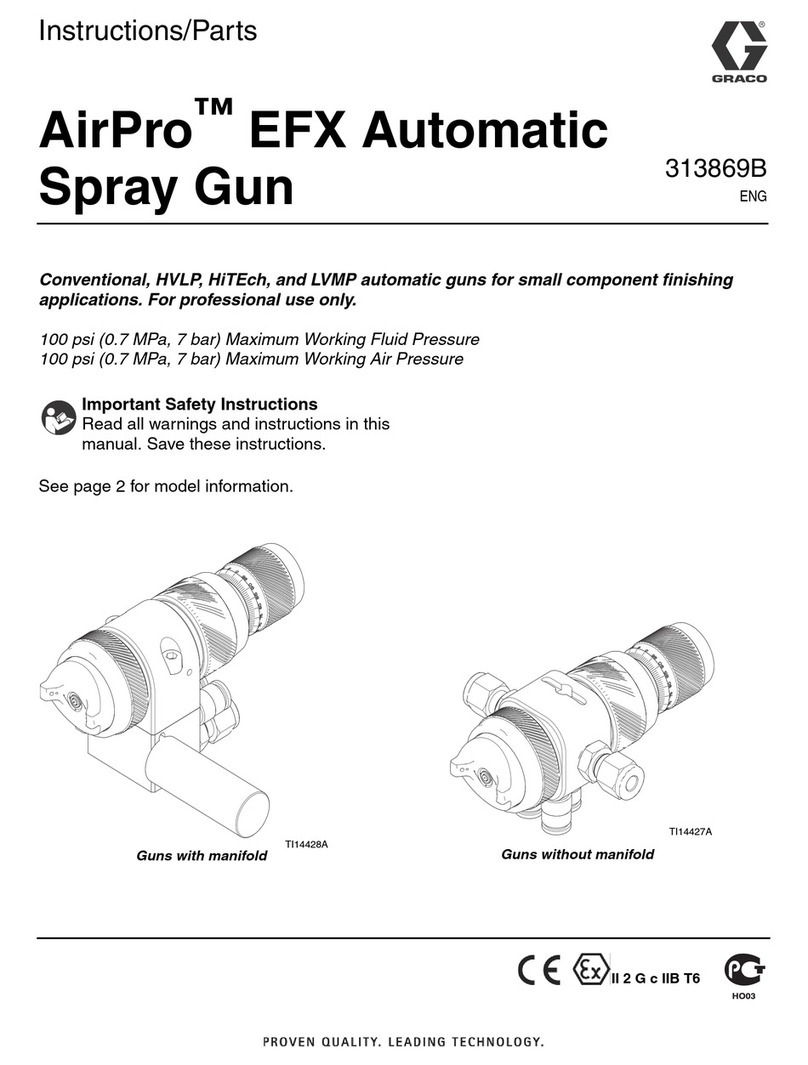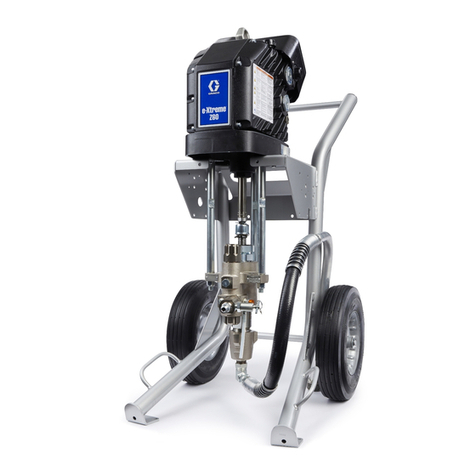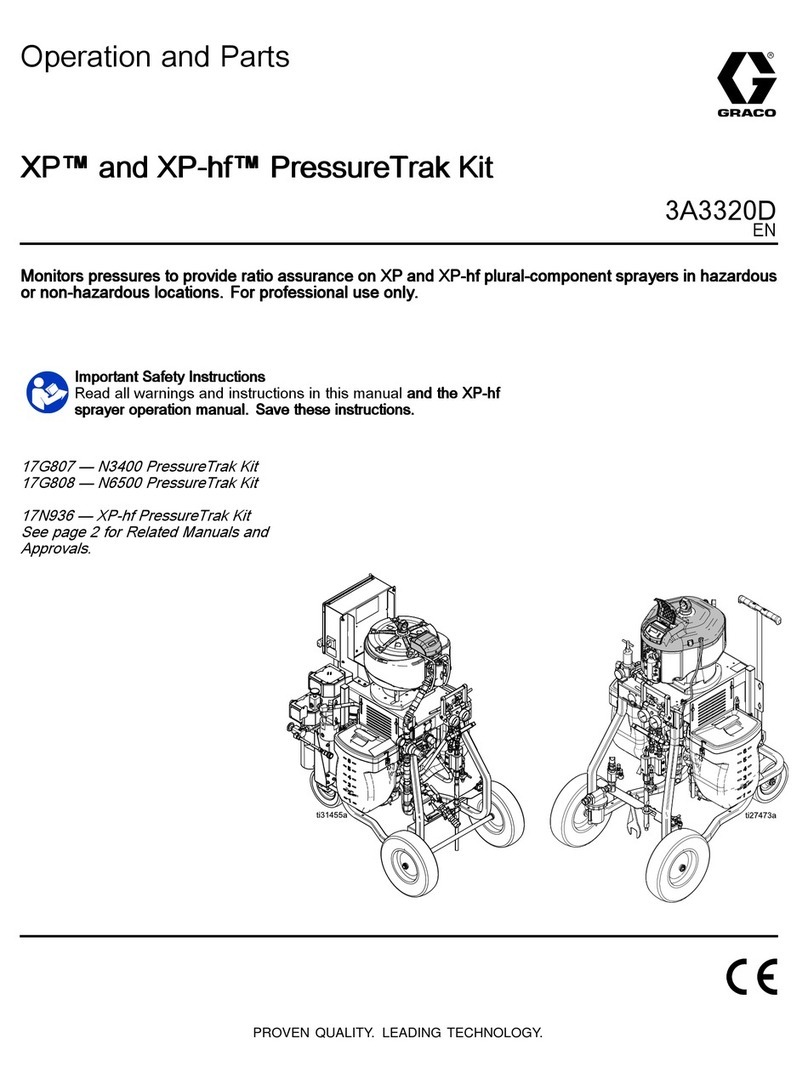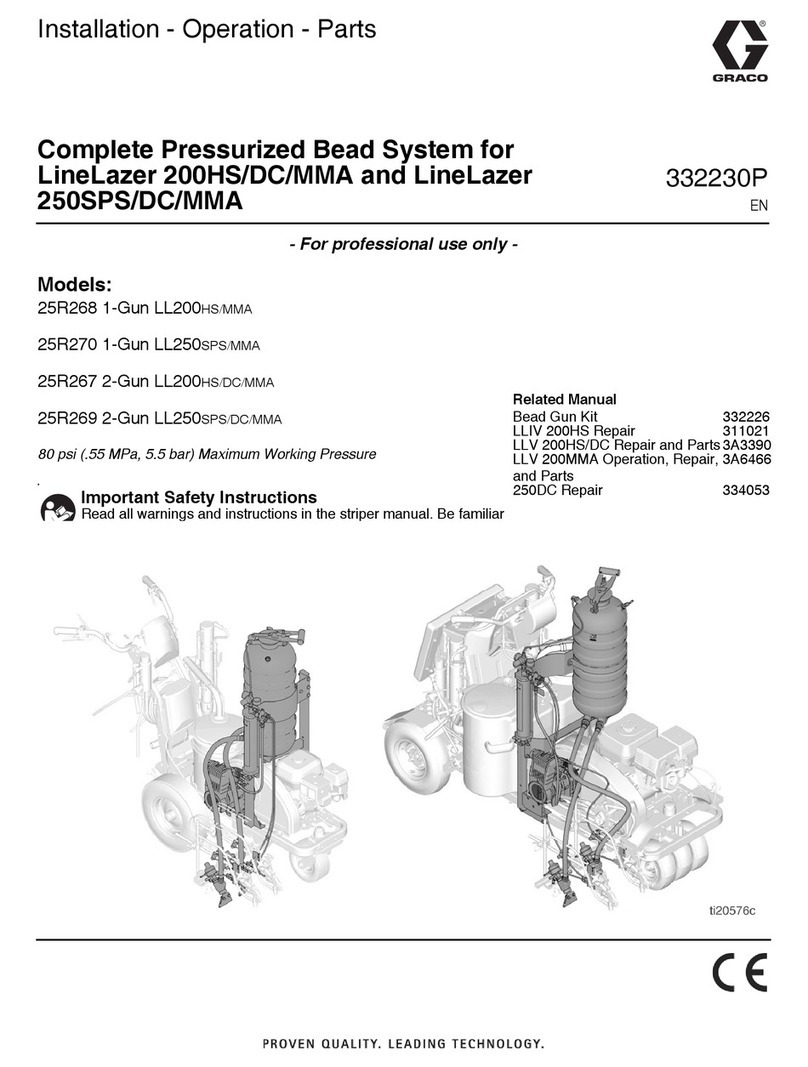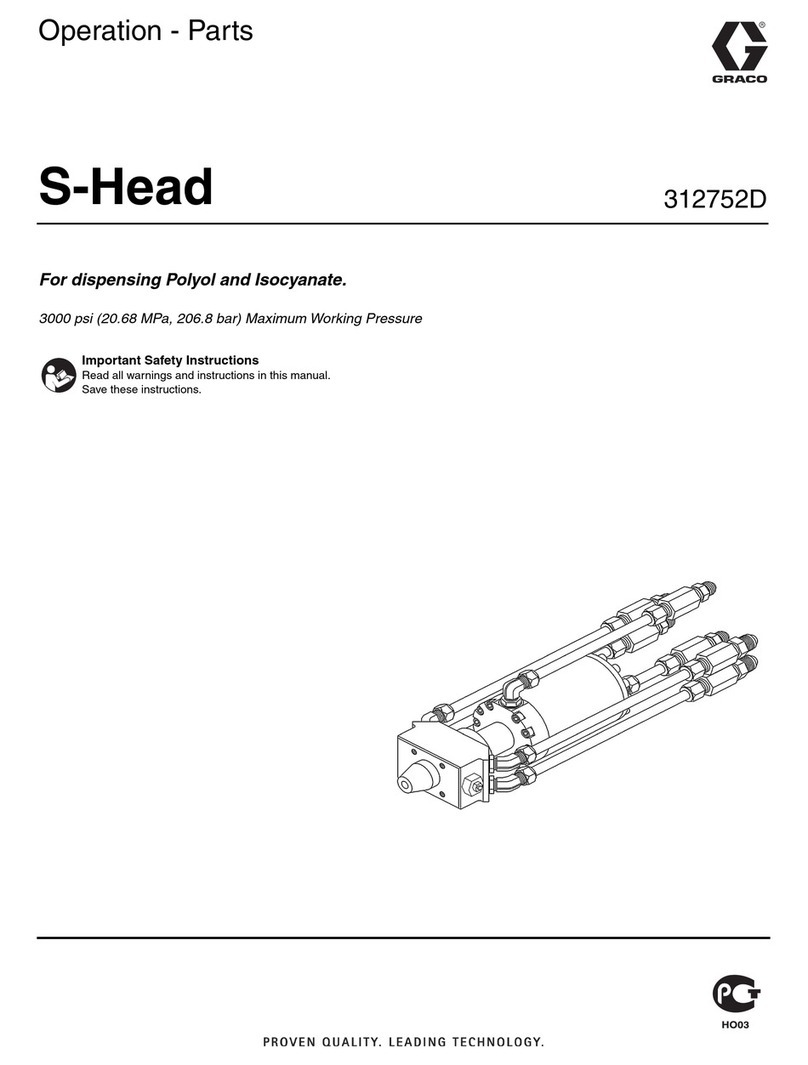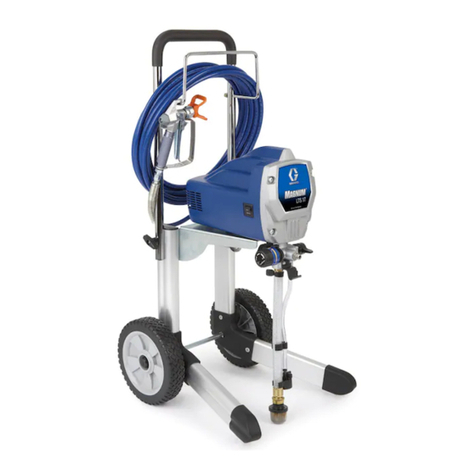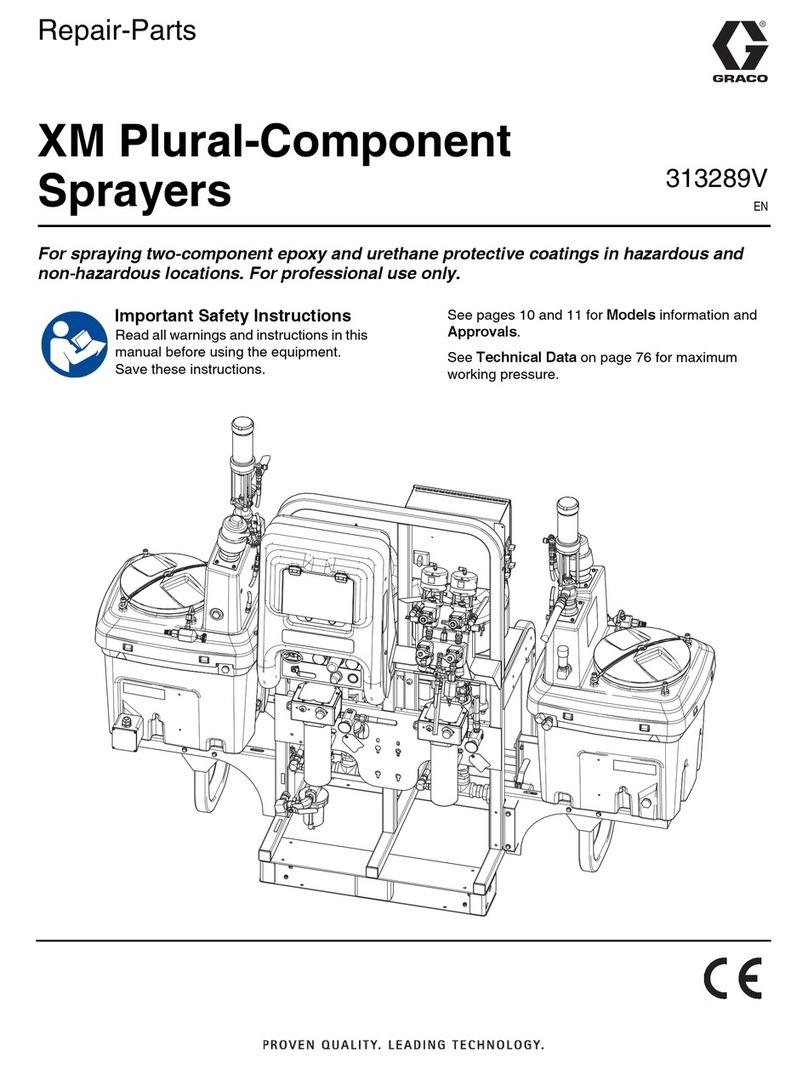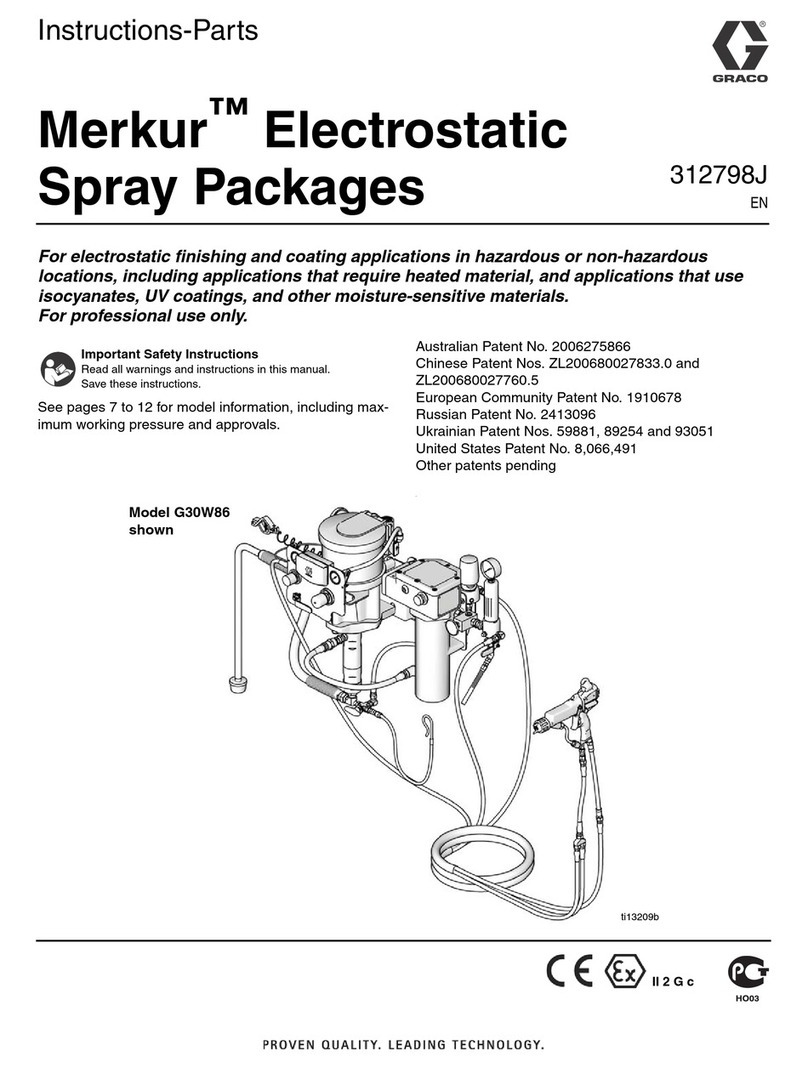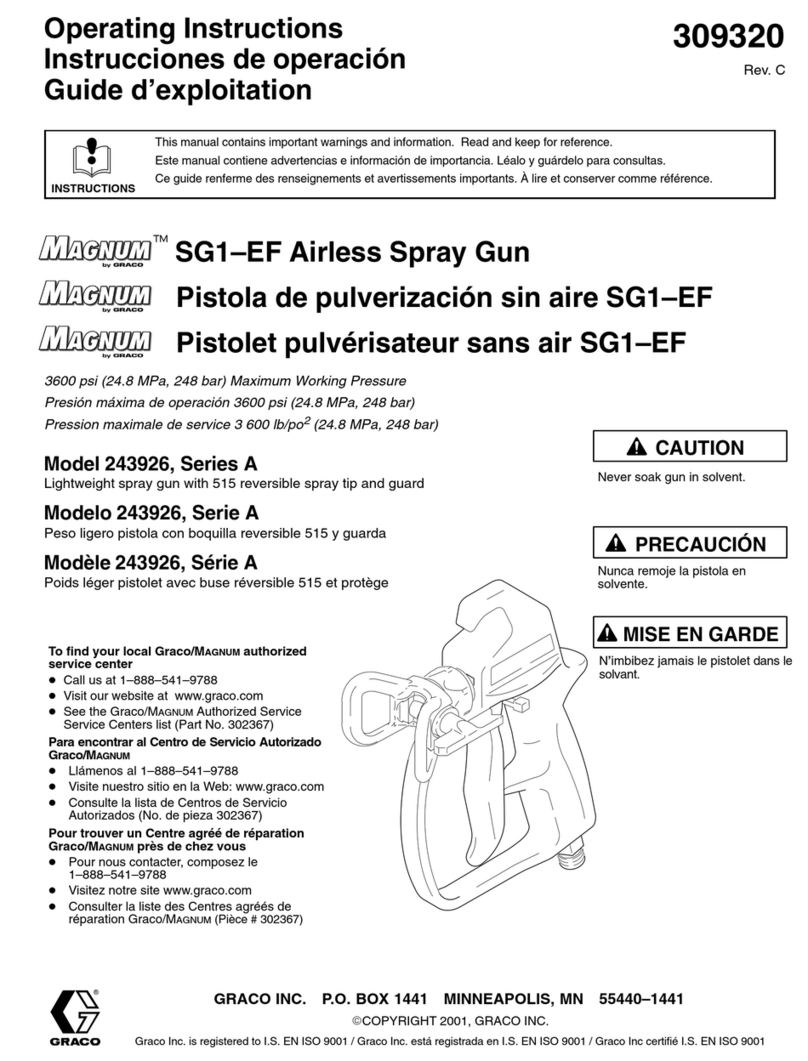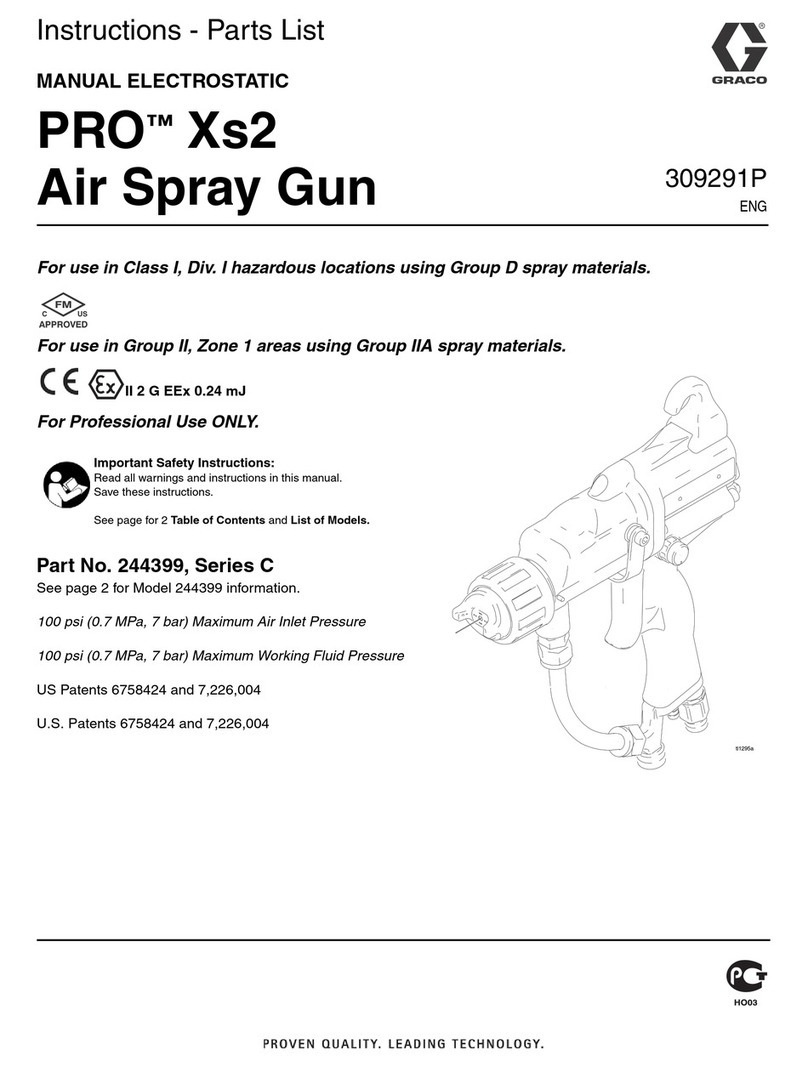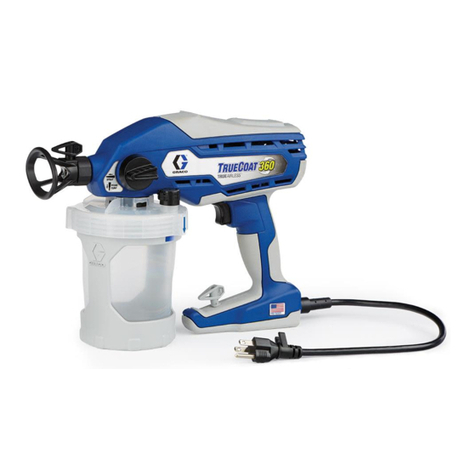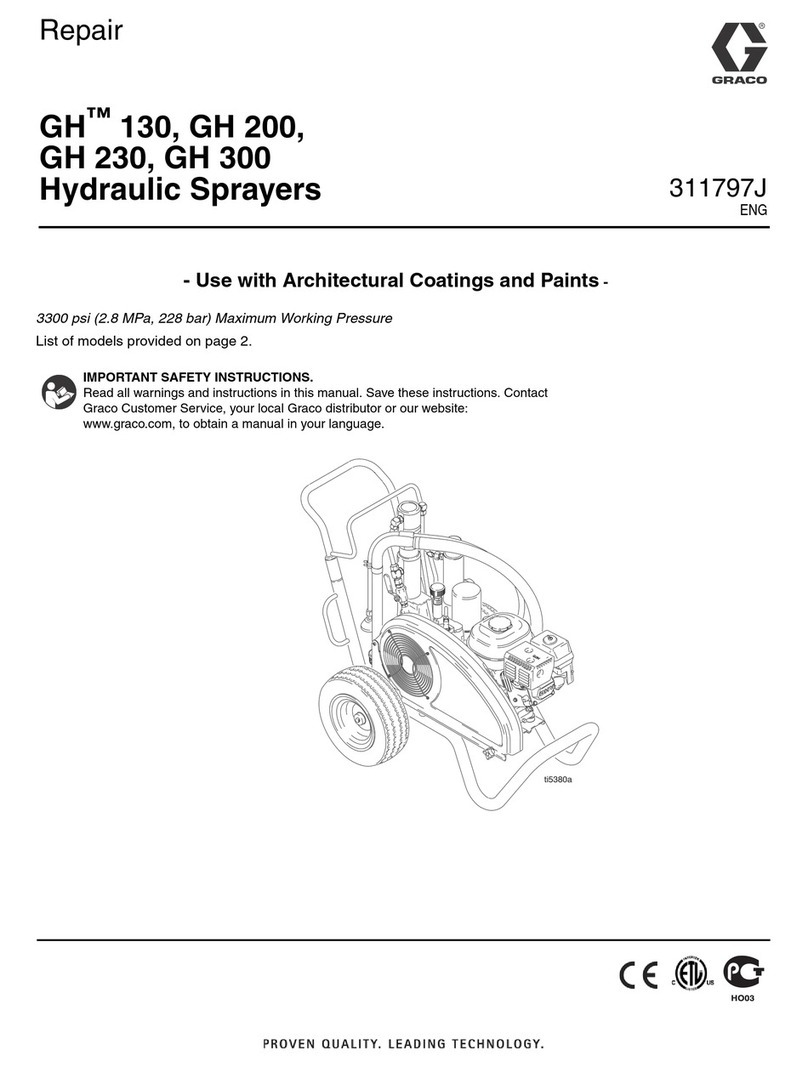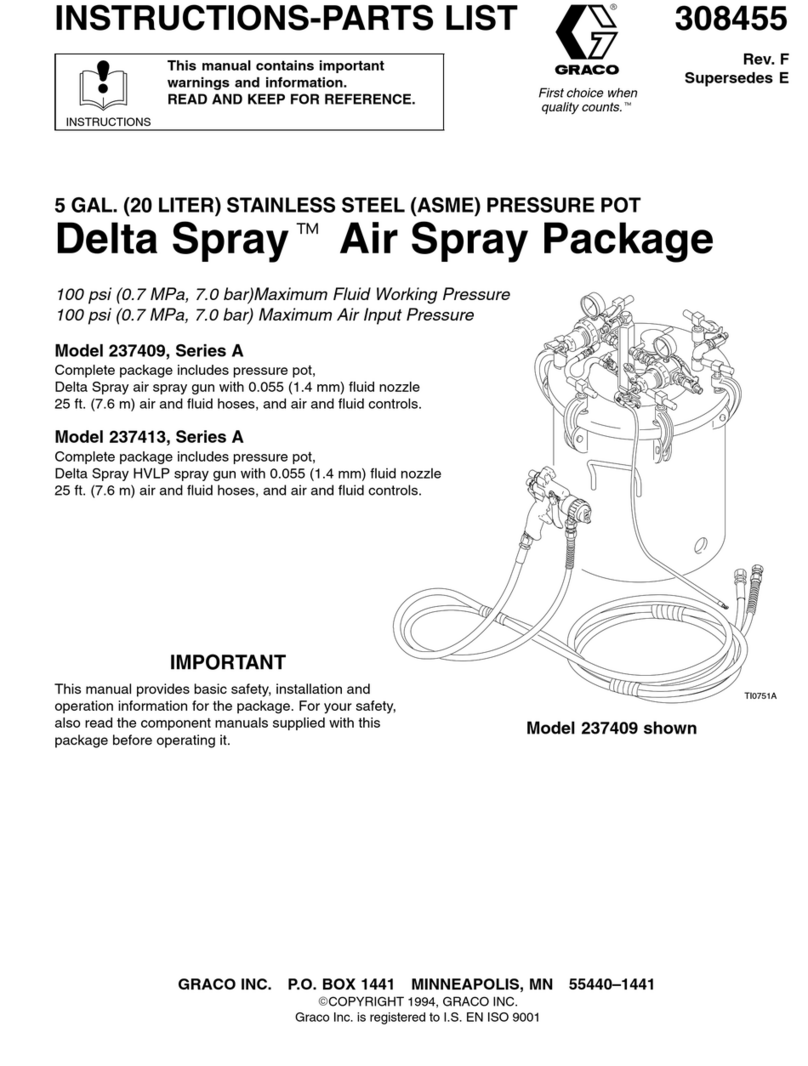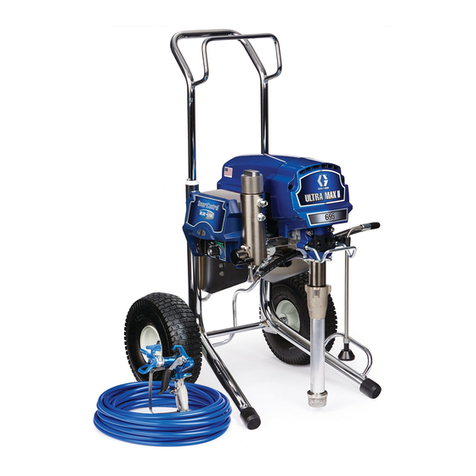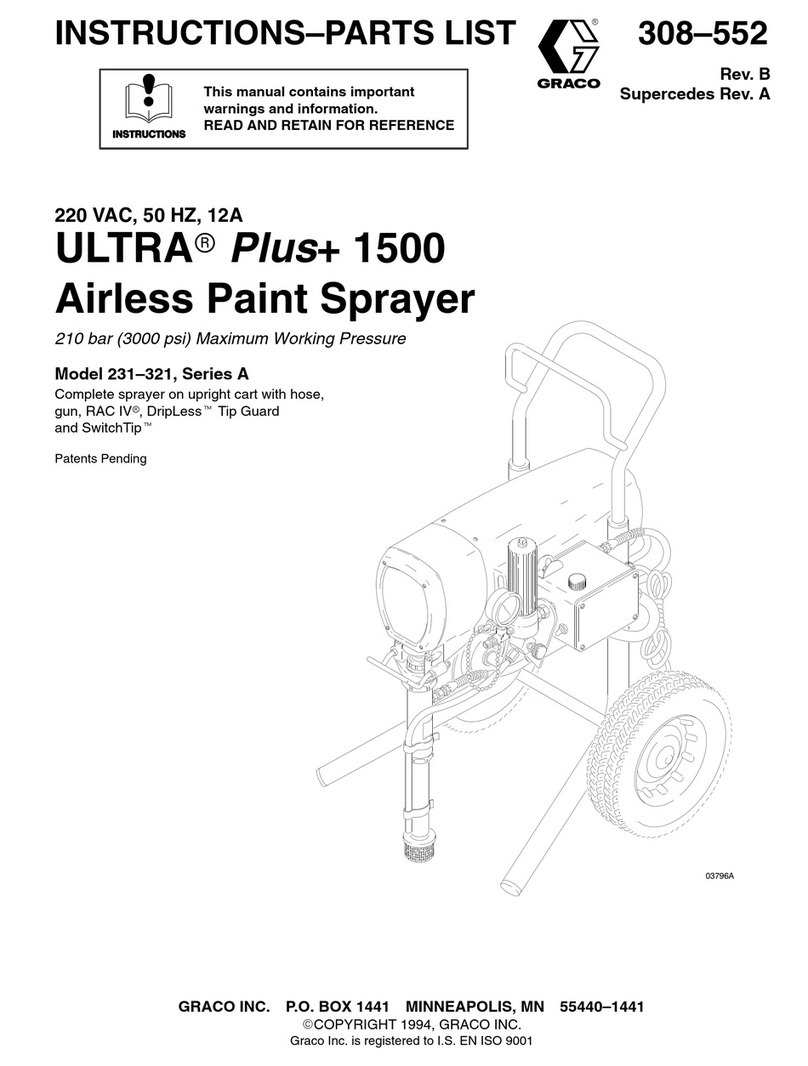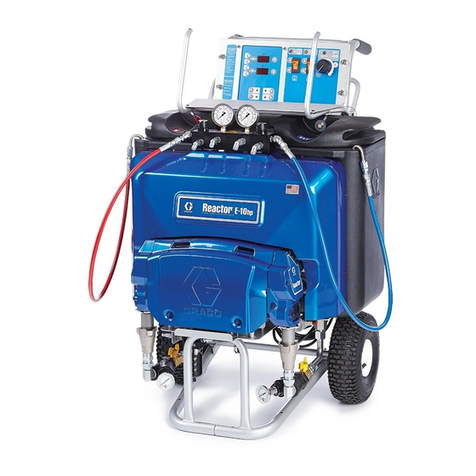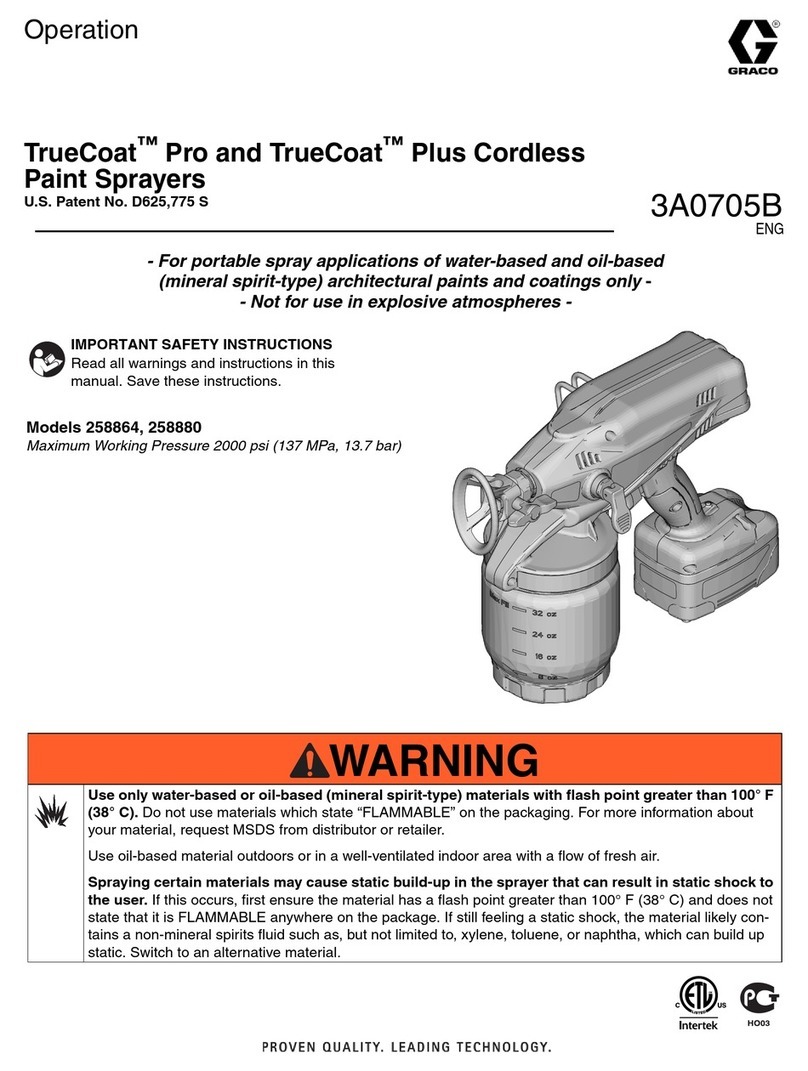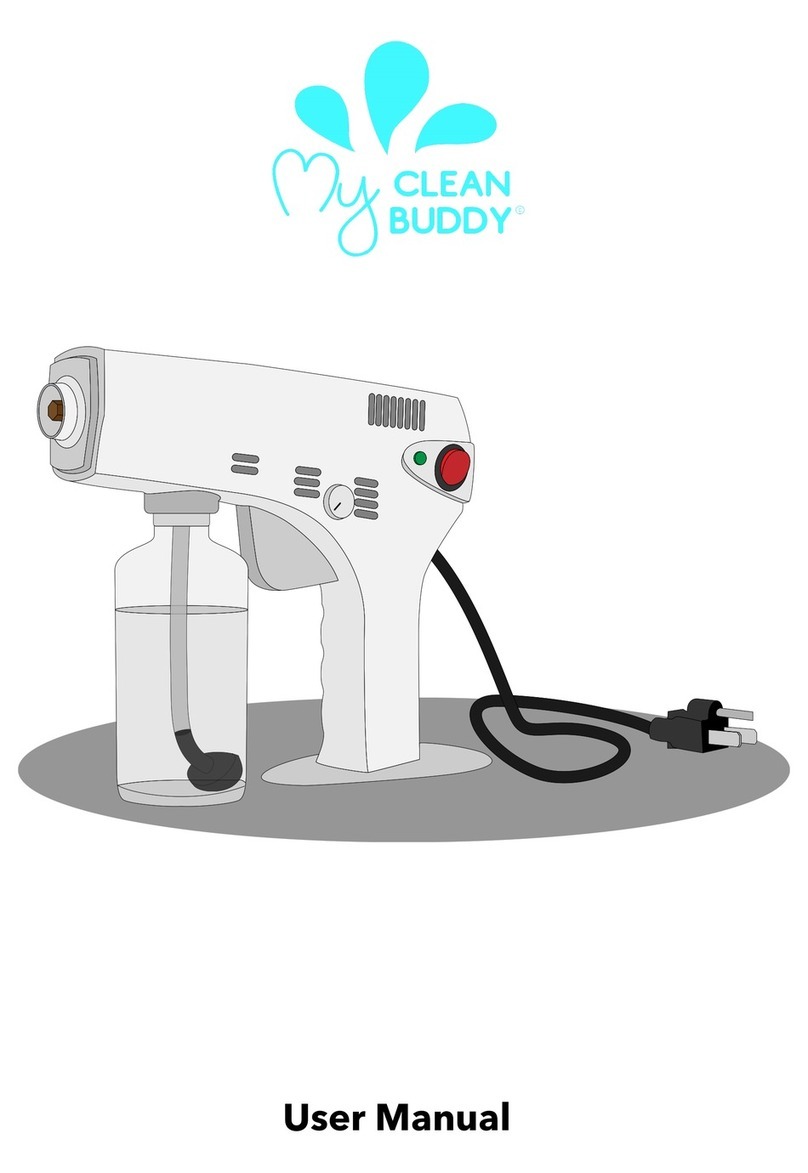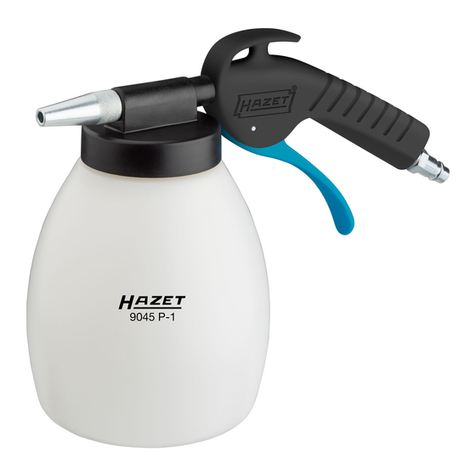
EQUIPMENT MISUSE HAZARD
Any misuse of the spray equipment or accessories, such as
General Safety
overpressurizing, modifying parts, using incompatible
chemicalsandfluids, or using worn or damagedparts,can
causethem to ruptureand result
in
fluid injection, splashing
in
the eyesor onthe skin, or other seriousbodily injury, fire, ex-
plosion
or
property damage.
could cause
it
to malfunction.
NEVER alter or modify any
part
of this equipment; doing
80
CHECK allsprayequipmentregularlyandrepair or replace
worn or damaged parts immediately.
Alwayswearprotectiveeyewear,glovesand clothing as
recommendedby the
fluid
and solvent manufacturer.
System
Pressure
Thissprayercandevelop
2750
psi
I195
berl
MAXIMUM
accessoriesare rated to withstand the maximum working
WORKING
PR€.SSUR€.
Be sure
that
all spray equipment and
pressureof this sprayer.
DO
NOT exceedthe maximumwork-
ing pressure of anycomponent oraccessory used'in the
witem.
Fluid and Solvent Compatlbillty
Alwaysread the
fluid
andSolventmanufacturer'sliterature
before usingthem
in
this sprayer.
HOSE
SAFETY
Highpressurefluid
in
thehoses canbevery dangerous.If the
damage or misuse,the high pressure spray emittedfrom
it
can
hose develops aleak, split or rupturedueto any kindof wear,
cause
a
fluid injection injury or other serious bodily injury or
propany damage.
ALL FLUID HOSES MUST HAVESPRING GUARDS ON
kinks or bendsat or closeto thecoupling which can result
in
BOTH
ENDS1
The spring guards help protect the hose from
hose rupture.
TIGHTEN allfluid connections securely before each use. High
pressure fluid can dislodgealoosecouplingor allow high
pressure sprayto be emitted from thecoupling.
NWER use a damaged hose. Before each use. checkthe en-
tirehosefor cuts, leaks, abrasion,bulging cover,ordamage or
movement of the hose couplings. If any of these conditions
exist, replace the hose immediately.
DO
NOTtry torecouple
highpressure hoseor mend
it
withtape or any other device. A
repairedhosecannot containthe high pressure fluid.
HANDLEAND ROUTE
HOSES
CAREFULLY.
Do
not pull on
hosesto move equipment.
Do
notusefluidsormlventswhich
are not compatiblewith the innertube and cover ofthe hose.
DO
NOTexposeGracohose to temperaturesabove180°F
(82°C) or below
-4O'F
I-4O"C).
Proper hosegroundlng contmulty
IS
essentialtomaintaining e
Hose
Groundlng Contlnulty
grounded spray system. Checktheelectrical resistanceofyour
fluid hosesat least once a week.Ifyour hose doesnothave a
tag on
it
which specifies the maximum electrical resistance,
contact the hose supplier or manufacturer for the maximum
resistancelimits.Usearesistancemeter
in
the appropriate
range for your hoseto check the resistance. If the resistance
exceeds the recommended limits, replace
it
immediately. An
ungrounded or poorly grounded hose canmake your system
hazardous.AlsoreadFIRE
OR
EXPLOSION HAZARD.
FIRE
OR
EXPLOSION HAZARD
through the pump and hose. If every part of the spray equip-
Static electricity is created by thehighvelocity flow of fluid
ment is not properly grounded, sparking may occur, and the
systemmaybecomehazardous.Sparkingmayalsooccur
when pluggingin or unplugging a power supply cord. Sparks
can ignite fumes from solvents and the fluid being sprayed,
dust
particles and other flammable substances, whether you
are spraying indoorsor outdoors, and can cause
a
fire or ex-
plosionandseriousbodilyinjury
and
property damage.
away from the sprayer
and
the spray area.
Do
not plug
in
or
Always plug the sprayer into
an
outlet at least
20
feet
16
ml
any chance of igniting fumes still
in
the air.
unplug any power supply cordsinthespray areawhenthereis
while using this equipment.STOP SPRAYINQ
hEDL
If
you experienceanystaticsparkingorevenasli
ht
shock
ATELY. Checktheentire systemfor proper grounding.
Do
not
corrected.
usethe system againuntilthe problemhas beenidentified and
Groundlng
To reducethe risk of static sparking, ground the sprayer and
all other spray equipment used or located in the spray area.
CHECK yourlocalelectricalcode for detailedgrounding
in-
structions for your area and type of equipment. BE SUREto
ground allof this spray equipment:
1.
2.
3.
4.
5.
6.
7,
Spreyer: plug the power supply cord, or extension cord,
eachequippedwithan undamaged three-prong plug,into
a properly grounded outlet.Donotuse anadapter.
All
ex-
tension cords musthave three wires andbe rated for
15
amps.
Fluid
hoses: use
only
groundedhoses
with
a maximumof
500'feet
(150
m)combinedhoselengthtoensure ground-
ing continuity. Refer to Hose Groundlng Conrlnulty.
Spray
gun:
obtaingroundingthroughconnection to a
properly groundedfluid hose and sprayer.
Objectbeing sprayed: accordingto local code.
Fluid
supply container: accordingto local code.
All
solventpails used when flushing, according to local
code. Useonlymetalpeils, which are conductive.
Do
not
or cardboard, which interruptsthe grounding continuity.
placethe
pail
ona non-conductivesurface, suchas paper
To
maintaingroundingcontinuitywhenflushingorreliev-
ing
pressure, alwaysholda metalpartof thegunfirmly to
the side of agroundedmetalpail, then trigger the.gun.
Flushing Safety
Reducethe riskofinjection injury, staticsparking, orsplashing
of
this manual.Follow the Pressure Rellef Procedure
on
byfollowing the specific flushing procedure givenon page
12
page
4,
and removethespray
tip
befOr.9flushing. Holda metal
part
of the gun firmly tothe side of a metal pail anduse the
lowest possiblefluid pressure during flushing.
MOVING PARTS HAZARD
Moving parts can pinch or amputateyourfingers or other
bodyparts. KEEPCLEAR of movingparts when starting or
operating the sprayer. Unplug the sprayer, and follow the
Pressure Rellef Procedure on aaae
2.
beforecheckina or
servicing anipart of the sprayeitoprevent
it
from stariing
accidentally.
IMPORTANT
ticularly the General Standards, Part
1910,
and the Construction Standards, Part 1926-should be consulted.
UnitedStates Government safety standards have been adopted undertheOccupational Safety and HealthAct. These standards-par-
307-758
3

